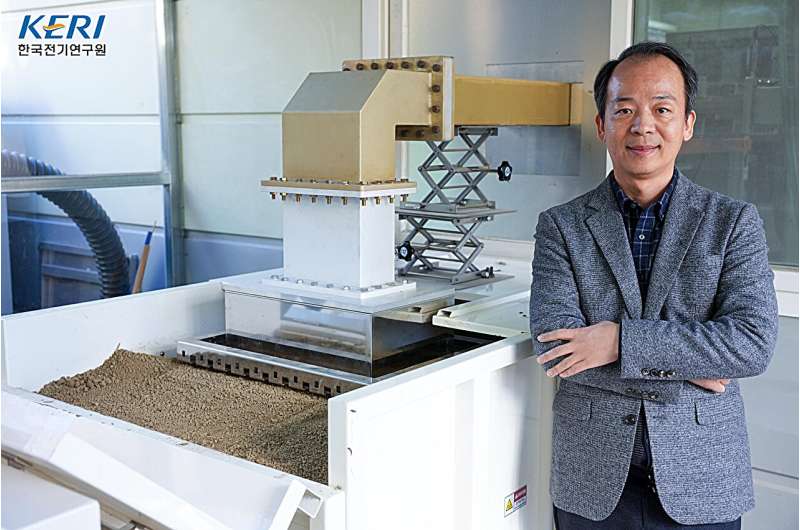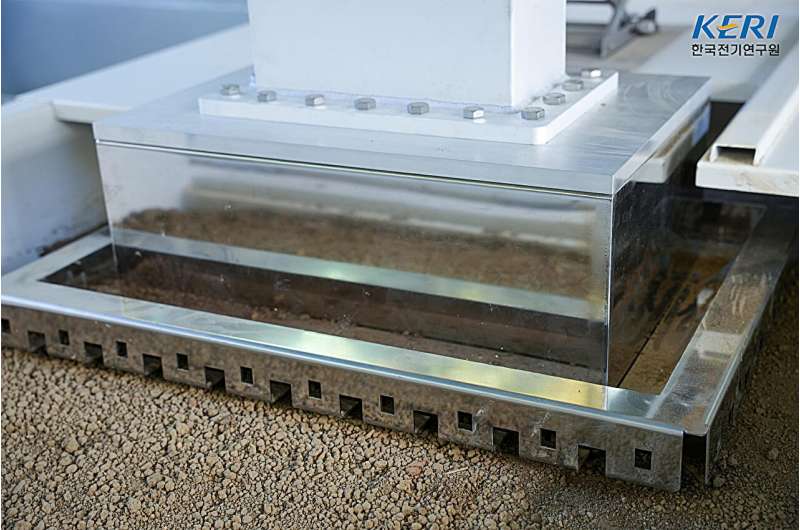This article has been reviewed according to Science X's editorial process and policies. Editors have highlighted the following attributes while ensuring the content's credibility:
fact-checked
trusted source
proofread
Microwaves heat the soil to eliminate pests and help farmers manage soil diseases

A research team led by Dr. Sunshin Jung at the Korea Electrotechnology Research Institute (KERI) has developed a breakthrough technology that effectively eliminates pests without the use of pesticides and protects farms from soil diseases by using microwave heating, the core mechanism of microwave ovens.
Soil diseases caused by monocultures are a major concern for farmers as they reduce crop yield and quality. Soil diseases can be caused by a number of factors, but the most common are pests such as soil-borne bacteria, fungi, and nematodes.
Pesticides are commonly used to control pest infestation, but their use comes with its drawbacks, including the destruction of the agricultural ecosystem, pesticide resistance, and toxic residues. Leaving the land fallow for a long time to restore soil could be an option, but it is not affordable for most farmers as it affects their livelihoods.
KERI has developed a technology that penetrates microwaves deep into the ground to heat soil moisture and eliminate pests vulnerable to heat. There has been research on microwave heating for soil remediation in Australia and elsewhere, but the penetration depth is at most 10 cm due to wave diffraction (as microwaves spread easily), and hence, microwaves are used only in a limited way, such as for weed control.
After years of research on the properties of microwaves, Dr. Jung's team has reached the level of being able to adjust the spatial distribution of microwaves by increasing or decreasing the wavelength and phase as desired. As a result, they have successfully developed a proprietary antenna (radiator) that maximizes microwave penetration.
Microwaves emitted from the antenna are induced to meet and overlap at a specific point underground. Coherently superimposed microwaves increase the amplitude and heat the soil down to 30 cm or more, the highest level of technology in the world.

Traveling down into the ground, microwaves selectively heat the moisture to 60~100 °C (heating temperature can be adjusted). Given that moisture makes up for 10–30% of the soil and that most pests live near the roots of crops and are heat-vulnerable (60 °C or more), KERI's technology is expected to be highly effective in sterilization. It will also have a long-lasting effect as the soil, once heated, does not cool easily but retains heat for a long time.
The research team's achievement draws attention to its potential contributions to help farmers deal with soil diseases. This research started at the request of an employee of the Animal and Plant Quarantine Agency, and the research outcome, the microwave technology, was transferred to Jooeun Care Farm Co., Ltd., a company specializing in pest control equipment.
Jooeun Care Farm plans to manufacture equipment based on the transferred technology and lay the foundation for farmers across the country to rent it at affordable prices in partnership with local governments and public institutions.
Dr. Sunshin Jung of KERI said, "We took advantage of the wave nature of microwaves, directing them to superimpose, not spread, and heat the soil underground," adding, "This technology helps to kill pests residing underground after harvest without the use of pesticides, their side effects and environmental pollution, and will contribute a lot to agricultural productivity and farmers' income."
Experts believe that this microwave heating technology could also be used to eradicate the habitats of foreign pests (e.g., termites, red fire ants, and tropical fire ants) found in ports and airports without destroying floors (non-destructive methods). Other potential applications include microwave heating devices mounted on vehicles to remove black ice from roads in winter and cleaning of soil contaminated with oil.
KERI's research team, which has applied for patents on this achievement, expects that this penetrative microwave heating technology will have potential applications in various fields and will promote its commercialization by identifying companies that have a need for this technology.





















